Why does deploying fast still feel like a battle for so many teams?
Despite the abundance of tools, fragmented workflows and DIY DevOps setups often create more bottlenecks than breakthroughs.
In the 2024 DORA report by Google Cloud, elite teams (top 20%) deploy changes multiple times per day, recover from failures in under an hour, and maintain a change failure rate below 5%.
That’s the power of DevOps done right, and that’s exactly what DevOps as a Service (DaaS) delivers. Teams move from fighting fires to delivering features thanks to DaaS’s fully managed, cloud-native platforms, which eliminate infrastructure friction.
So, what does it take to adopt DaaS successfully? That’s the question tech leaders are asking as they evolve from traditional models to agile, cloud-first systems.
In this blog, we’ll unpack what DaaS means, explore practical use cases, outline its core benefits, delve into architecture, and lay out actionable steps for implementation.
So, let’s get started with the understanding of DaaS.
What is DevOps as a Service (DaaS)?
DevOps as a Service (DaaS) is a cloud-based model that delivers essential DevOps practices like CI/CD, testing, monitoring, and infrastructure management through a unified, automated platform. Instead of managing fragmented toolchains in-house, teams can simplify software delivery using scalable external services.
Table of Contents
So, why are more companies shifting toward DaaS? Here is the reason:
- In-house DevOps often results in delays, misconfigurations, and resource bottlenecks
- DaaS simplifies operations through centralized orchestration and automation
- Teams benefit from faster deployments, lower maintenance, and improved visibility
- Standardized workflows help reduce errors and accelerate release cycles
This model is about smarter alignment. DaaS enables businesses to scale confidently, meet compliance requirements, and improve feedback loops across development environments.
As per the recent Insights, the DevOps market is on track to surpass $30 billion by 2032, with DaaS playing a major role in that growth due to its strong fit for cloud-native and hybrid architectures.
Tired Of Patching Together Pipelines Yourself? DaaS gives you a stable and managed system designed for dependable performance.
5 Business Use Cases Where DaaS Delivers Maximum Value
DevOps as a Service (DaaS) has become a strategic driver for organizations looking to scale efficiently, reduce release risks, and improve delivery speed. As modern software environments grow more complex, businesses are turning to DaaS to unify fragmented toolchains and bring automation into every stage of the pipeline.
Below are 5 validated use cases that demonstrate how DaaS brings measurable value to businesses across cloud-native, hybrid, and traditional ecosystems.
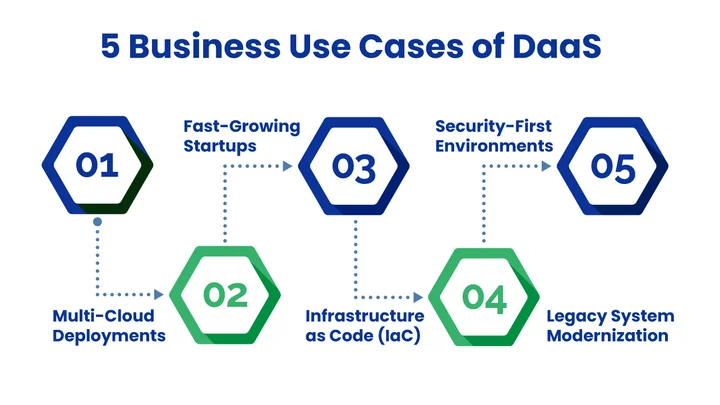
1. Simplifying Multi-Cloud and Hybrid Deployments
Managing applications across AWS, Azure, and Google Cloud introduces deployment friction, duplication, and inconsistent policies. DaaS platforms solve this by offering cloud-agnostic CI/CD pipelines, integrated monitoring, and unified policy enforcement across all cloud environments.
In the Flexera 2024 State of the Cloud Report, 87% of organizations now follow a multi-cloud strategy, making centralized orchestration through DaaS not just helpful but necessary.
2. Enabling Startups and SMBs Without In-House DevOps
Building a DevOps team from scratch is expensive and slow for startups and SMBs. DevOps as a Service (DaaS) provides ready-to-use CI/CD automation, testing frameworks, and Infrastructure-as-Code tools at a fraction of the cost.
2024 State of the Cloud Report, 47% of SMBs cite lack of resources and expertise as their top cloud challenge, making managed solutions like DaaS an increasingly valuable alternative.
Instead of hiring and managing full-time DevOps teams, startups can accelerate product delivery, ensure environment consistency, and scale infrastructure with ease by outsourcing DevOps responsibilities to cloud-native DaaS platforms.
3. Automating Infrastructure Management with IaC
Manual provisioning and configuration of infrastructure can slow down development and introduce human error. DaaS integrates Infrastructure as Code (IaC) tools such as Terraform and AWS CloudFormation to automate infrastructure setups and ensure consistency across environments.
The HashiCorp 2023 Cloud Strategy Survey reports that 89% of organizations using IaC experience improved deployment reliability and faster scalability.
4. Embedding Security and Compliance into Pipelines
Security breaches often occur due to misconfigured environments or delayed testing. DaaS platforms embed security-as-code, vulnerability scanning, and access controls into CI/CD workflows, ensuring compliance without slowing releases.
5. Supporting Legacy System Modernization
Legacy infrastructure often hinders agility and scalability. DevOps as a Service allows businesses to migrate legacy systems into containerized, automated environments gradually. This enables them to modernize legacy software safely and incrementally, without disrupting day-to-day operations or compromising data integrity.
What are the Benefits of Adopting DevOps as a Service?
Adopting DevOps as a Service allows teams to offload the complexity of managing CI/CD pipelines, infrastructure, and monitoring tools. Instead of spending time configuring environments or troubleshooting integrations, teams can focus on delivering high-quality software faster.
Now, let’s break down the core benefits of leveraging cloud-based DevOps solutions through a DaaS model.

-
-
- A quicker time to market: DaaS platforms offer pre-integrated pipelines and DevOps automation tools, significantly reducing development and deployment cycles. For instance, companies can release updates in hours instead of days, allowing faster innovation and real-time response to user feedback.
- Reduced Operational Overhead: Managing DevOps internally requires constant attention to tool upgrades, server configurations, pipeline health, and team coordination. DaaS removes these repetitive burdens by shifting infrastructure and operations to managed platforms. This reduces the need for large DevOps teams while improving pipeline reliability and uptime.
- Cost Efficiency and Resource Optimization: One of the most overlooked benefits of DevOps outsourcing services is cost control. Rather than hiring multiple engineers or purchasing a dozen tools separately, DaaS offers a bundled, pay-as-you-go model. This helps startups, SMBs, and even enterprises scale DevOps practices without ballooning their tech budget.
- Centralized Toolchain Management: Fragmented toolsets are a common bottleneck in traditional DevOps setups. DaaS provides unified dashboards that integrate version control, CI/CD, testing, monitoring, and logging tools into a single view. This centralization improves visibility, simplifies debugging, and improves coordination between Dev and Ops teams.
- Advanced Security and Compliance: DaaS integrates continuous compliance checks and automated vulnerability scans directly into deployment pipelines. Moreover, enterprise-grade DaaS platforms provide audit trails, access control policies, and encryption at every layer, crucial for regulated industries.
- Scalability with Minimal Effort: Scaling DevOps processes manually can be overwhelming. Cloud-based DevOps solutions enable auto-scaling environments, on-demand resource allocation, and infrastructure as code.
This flexibility is especially useful during product launches or seasonal traffic spikes. - Improved Collaboration and Team Productivity: DaaS helps promote collaboration by making pipelines, performance logs, and deployment histories accessible to all stakeholders.
Now that we’ve covered what DaaS can do, let’s dive into its core architecture to understand how these outcomes are delivered under the hood.
Is Your Team Drowning in Tool Overload and Still Missing Deadlines? DevOps as a Service replaces chaos with clarity, so you can deliver faster without burning out your team.
Let’s Discuss Your DevOps Roadmap
What is the Core Architecture of DevOps as a Service?
After covering the benefits of DaaS, it’s essential to understand how it all works under the hood. The architecture of DevOps as a Service is designed to automate the entire software delivery lifecycle from code integration to monitoring by connecting essential tools through a centralized platform.
In the following sections, we will explore the foundational layers that power a cloud-based DevOps solution, enabling teams to deploy faster, smarter, and more reliably.
-
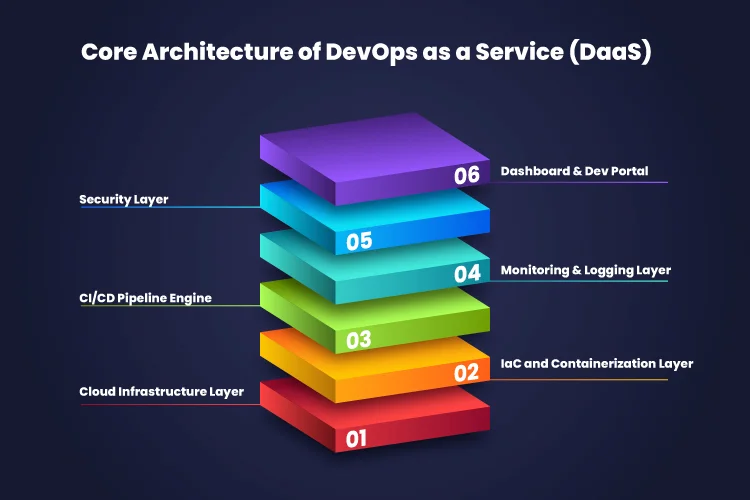
-
-
1. Centralized DevOps Pipeline Engine
At the heart of any DaaS platform lies a powerful pipeline engine that automates code integration, testing, delivery, and deployment.
This engine is responsible for orchestrating workflows across environments, ensuring seamless transitions from development to production.2. Infrastructure as Code (IaC) Layer
Next, DaaS platforms utilize Infrastructure as Code to provision and manage infrastructure automatically.
As a result, environments can be created, destroyed, or replicated in minutes, reducing manual configuration risks and boosting efficiency.3. Configuration Management & Containerization
To ensure consistent environments, DaaS uses tools such as Ansible, Chef, Puppet, or Kubernetes.
These manage server configurations, application dependencies, and container orchestration, reducing environment drift and enhancing deployment reliability.
Furthermore, containerization enables microservices to be deployed and scaled independently, making DaaS architecture highly modular and adaptable.4. Monitoring, Logging, and Observability
Observability is built into the DaaS architecture through integrated monitoring and alerting systems.
This helps teams catch issues early, reduce downtime, and maintain high availability across multi-cloud deployments.5. Security and Access Control Integration
Security is embedded. The DaaS architecture integrates role-based access control (RBAC), secret management, and automated vulnerability scanning within pipelines.
Solutions like HashiCorp Vault, SonarQube, or Aqua Security help enforce compliance and prevent unauthorized access.
This continuous security model ensures that every release is validated against predefined security rules, supporting safe and reliable delivery.6. Unified Dashboard and Reporting Layer
Finally, a DaaS platform brings visibility through centralized dashboards that unify pipeline status, logs, test results, infrastructure health, and security alerts.
These dashboards help development, operations, and business stakeholders stay aligned and make informed decisions.
With automated reporting, teams can continuously measure deployment frequency, change failure rates, and lead times.8 Steps to Implement DevOps as a Service in Your Organization
As the demand for faster, more reliable software delivery grows, organizations are rapidly turning to managed DevOps solutions to stay competitive. This upward trend reflects how DaaS is becoming a strategic necessity, not just a convenience.
With that context in mind, let’s break down how you can implement DevOps as a Service within your organization, step by step.

1. Assess Current DevOps Maturity
Start by evaluating your current development and operations workflow.
- Are you using version control?
- Or, how often are you deploying code?
This audit helps identify gaps and determine which services you’ll need to outsource or centralize. Use maturity models like the DevOps Assessment Tool by DORA to benchmark where your organization stands today.
2. Define Business Goals and Success Metrics
Before choosing tools or vendors, align DevOps goals with broader business objectives.
Are you aiming for faster release cycles, lower incident rates, or more stable environments?
Defining these KPIs helps shape your implementation roadmap and measure ROI later. For instance, common metrics include deployment frequency, change failure rate, and recovery time.
3. Choose a DevOps Service Provider or Platform
Once goals are clear, the next step is selecting a DaaS provider that meets your needs.
Look for vendors that offer integrated CI/CD, container orchestration, monitoring, and security.
Some top DaaS platforms include:You should evaluate them based on scalability, tool integration, support, and compliance capabilities.
4. Integrate Version Control and CI/CD Pipelines
With a DaaS platform selected, start by integrating your codebase with a version control system like GitHub or GitLab.
Then, implement automated CI/CD pipelines using tools like Jenkins, GitHub Actions, or CircleCI.
You must ensure your pipelines include unit testing, code linting, and automated deployments to staging or production.5. Automate Infrastructure Using IaC
Set up your infrastructure using Infrastructure as Code to ensure repeatable and scalable environments. Popular IaC tools include Terraform, AWS CloudFormation, and Pulumi. These integrate seamlessly with most DaaS platforms.
Automation here ensures that your infrastructure changes go through the same pipeline validations as your application code.6. Add Monitoring, Logging, and Feedback Loops
No DevOps implementation is complete without visibility. Integrate real-time monitoring and logging using tools like:
- Datadog
- Prometheus
- Grafana
- ELK Stack (Elastic)
Set up alerts, track system performance, and gather feedback through dashboards and automated reports to continuously optimize operations.
7. Embed Security into Every Layer
Security should not be an afterthought. Use tools like SonarQube for code quality analysis, Aqua Security for container security, and HashiCorp Vault for secrets management. This approach, often called “Shift-Left Security,” ensures vulnerabilities are caught before they ever reach production.
8. Train Your Teams and Encourage DevOps Culture
Finally, DaaS tools alone won’t deliver results without the right mindset. You should provide hands-on training to help teams adopt new workflows and encourage collaboration between developers, testers, and ops.
Additionally, regular feedback sessions, retrospective meetings, and shared ownership models are essential to maintaining long-term success.
Frequently Asked Questions (FAQs)
-
2. How to Implement DevOps as a Service
Shifting to DaaS requires a structured approach to avoid disruptions and maximize efficiency. Here’s how to make a successful transition:
- Analyze your current setup
- Choose a DaaS provider
- Set up CI/CD pipelines
- Use Infrastructure as Code (IaC)
- Add monitoring and security
- Train teams to manage and scale
3. The Use Cases of DevOps as a Service in Cloud Migration
DaaS supports cloud migration with automation, containerization, secure deployments, and reduced downtime, making transitions smooth and scalable.
4. What is the Architecture of DevOps as a Service?
A typical DaaS setup includes:
- Git-based repo
- CI/CD orchestrator (Jenkins, GitLab CI)
- IaC tools (Terraform)
- Monitoring (ELK, Prometheus)
- Security layers (Snyk, access control)
All managed via one unified dashboard.
5. What are the Benefits of Outsourcing DevOps to Third-Party Providers?
Outsourcing DevOps is a strategic move that helps businesses grow faster while staying lean.
Key benefits include:
- Cut costs and save time
- Speed up software delivery
- Access DevOps experts
- Ensure uptime, security, and compliance
- Focus on your core product
-
Final Takeaway: Is DaaS the Right Fit for You?
Are fragmented pipelines, slow releases, or cloud complexity holding your team back? DevOps as a Service may offer the clarity and control that your software delivery process is missing.
DaaS reduces operational drag, so your team can focus on product innovation, not platform upkeep, by unifying CI/CD, infrastructure management, monitoring, and automation under one umbrella.
DaaS adjusts to the changing requirements of your company, no matter if you’re scaling a cloud-native application, modernizing legacy systems, or managing a multi-cloud configuration.
Teams exploring infrastructure upgrades should also consider how cloud migration services complement this journey, enabling the speed, flexibility, and resilience your applications demand.
Is Your DevOps Setup Slowing Down Your Growth? Get expert insight into how you can simplify, automate, and scale faster.

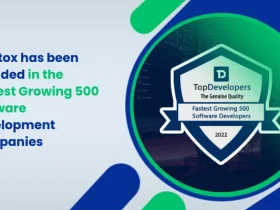


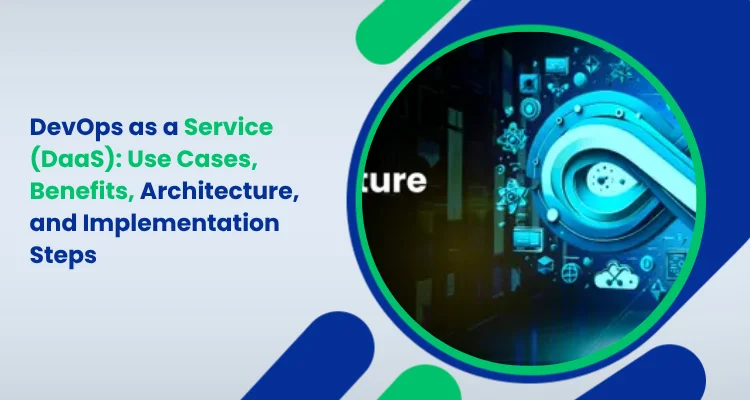

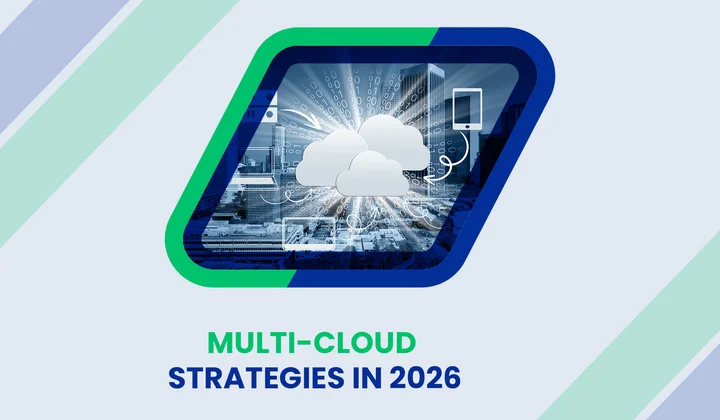

Share your thoughts about this blog!